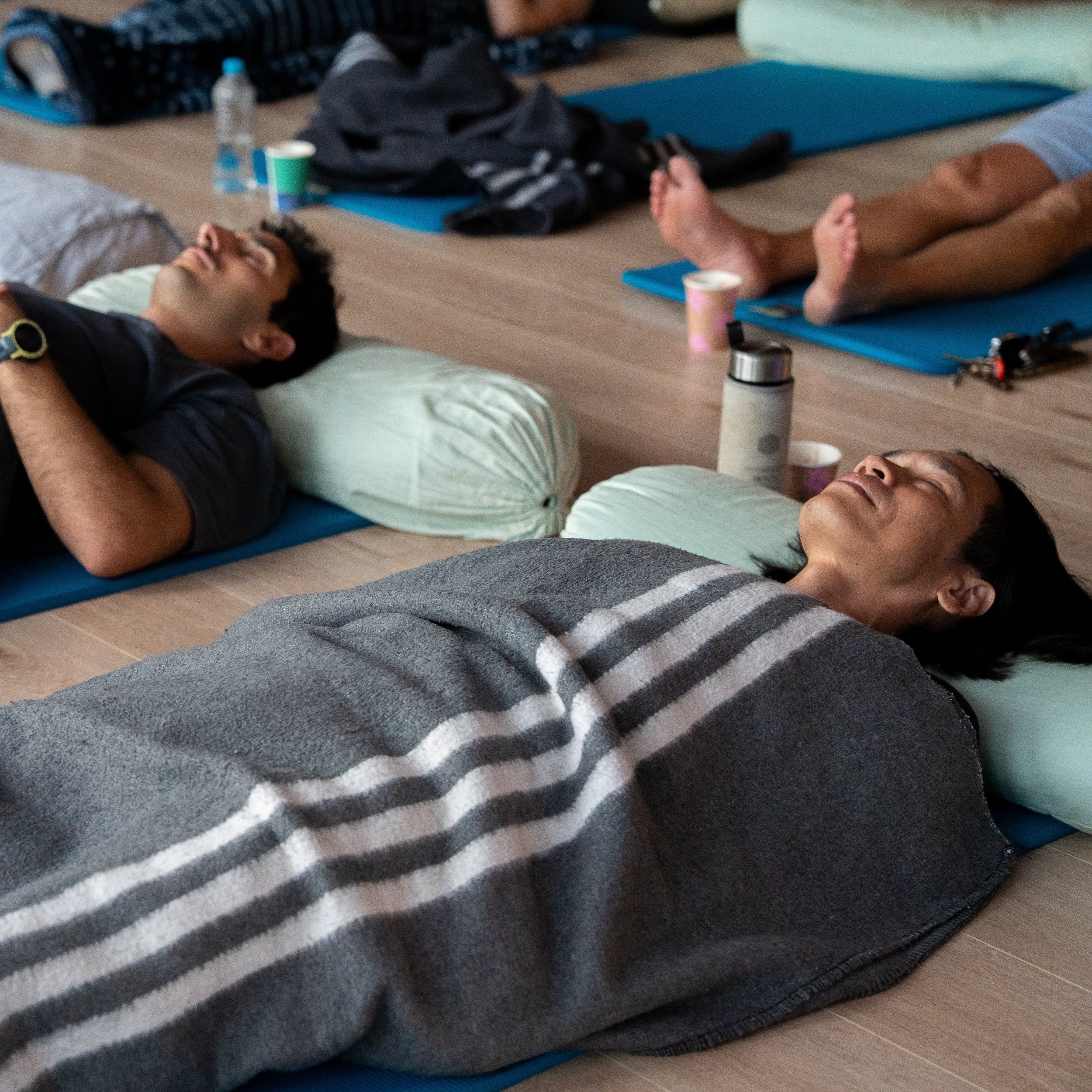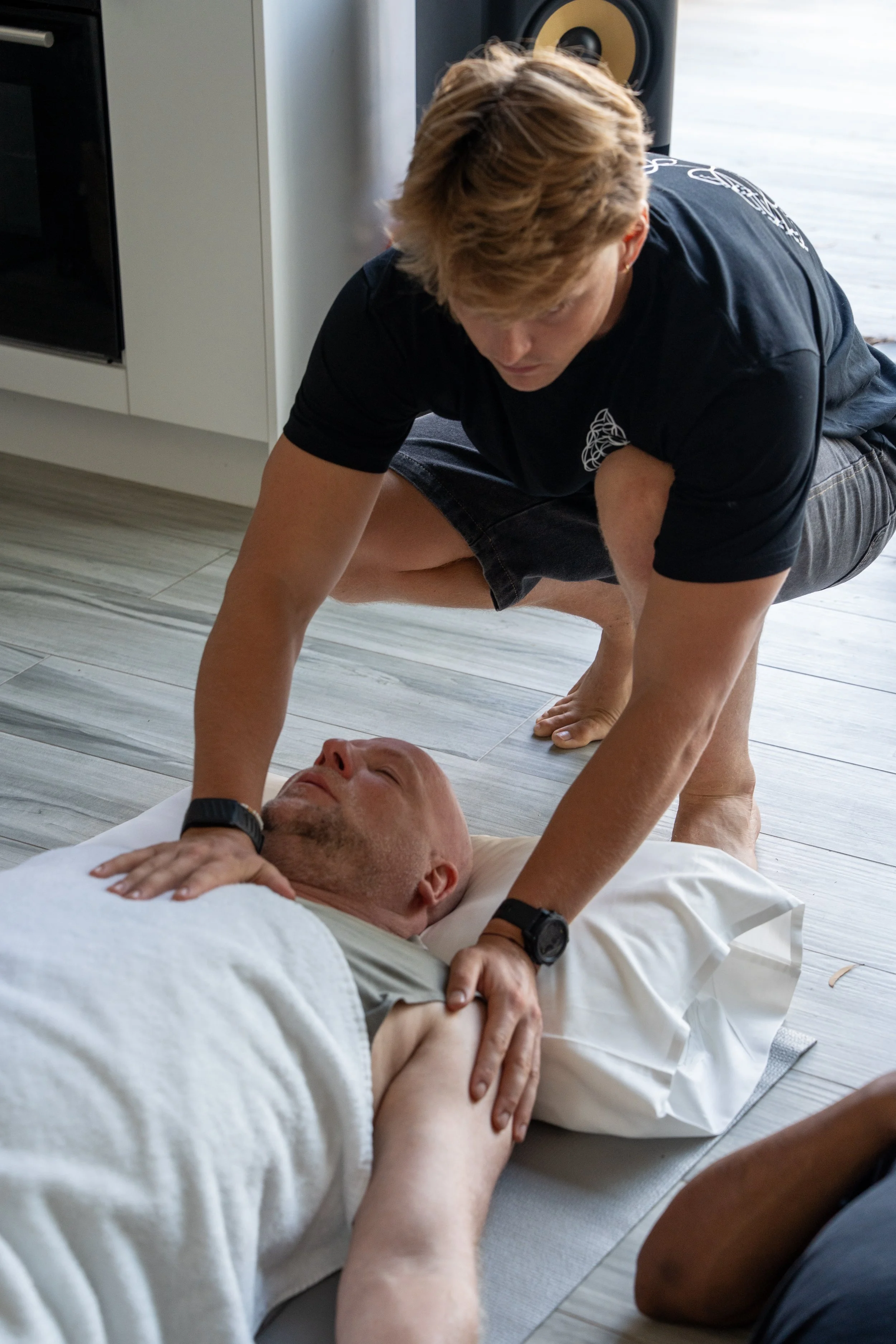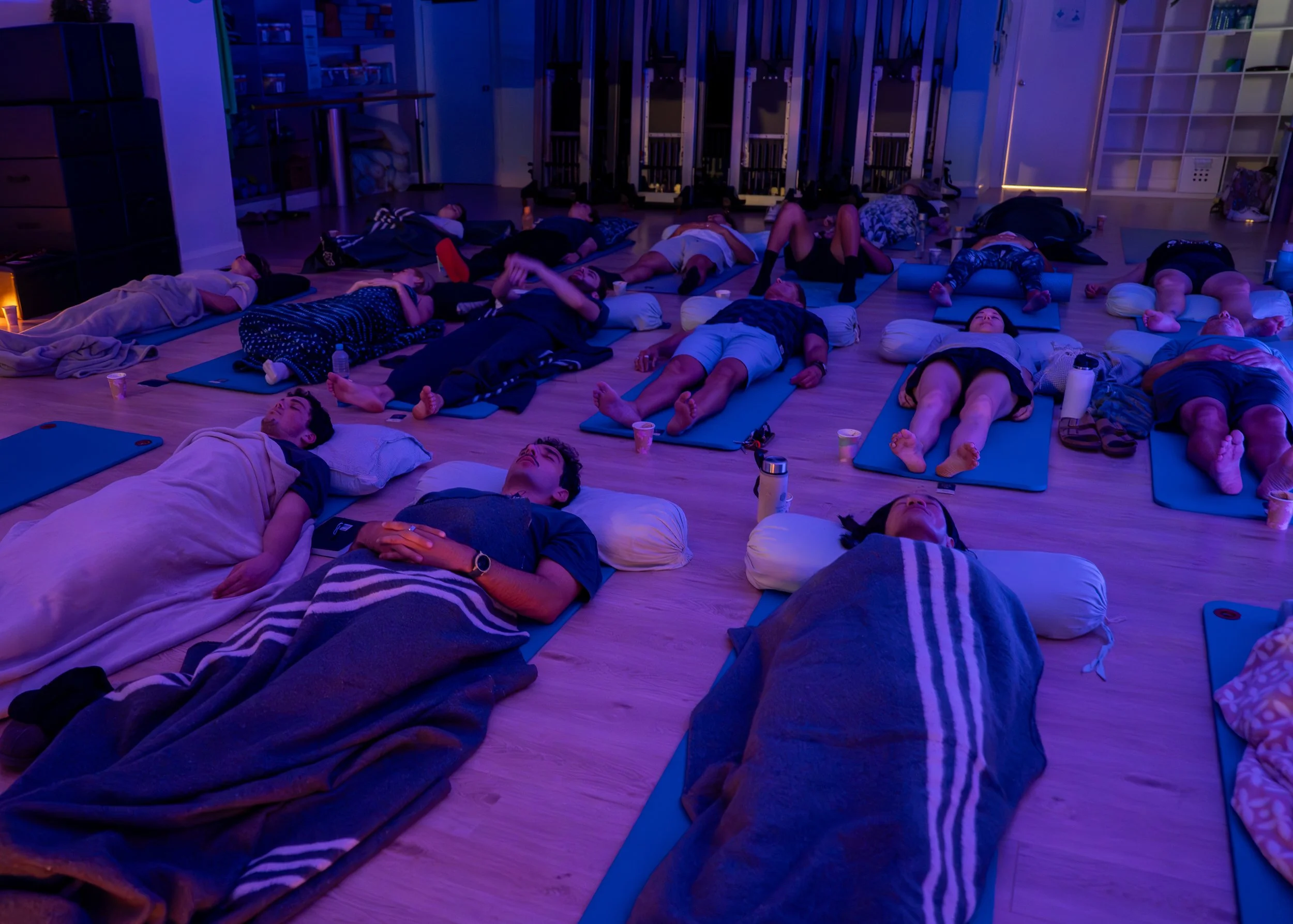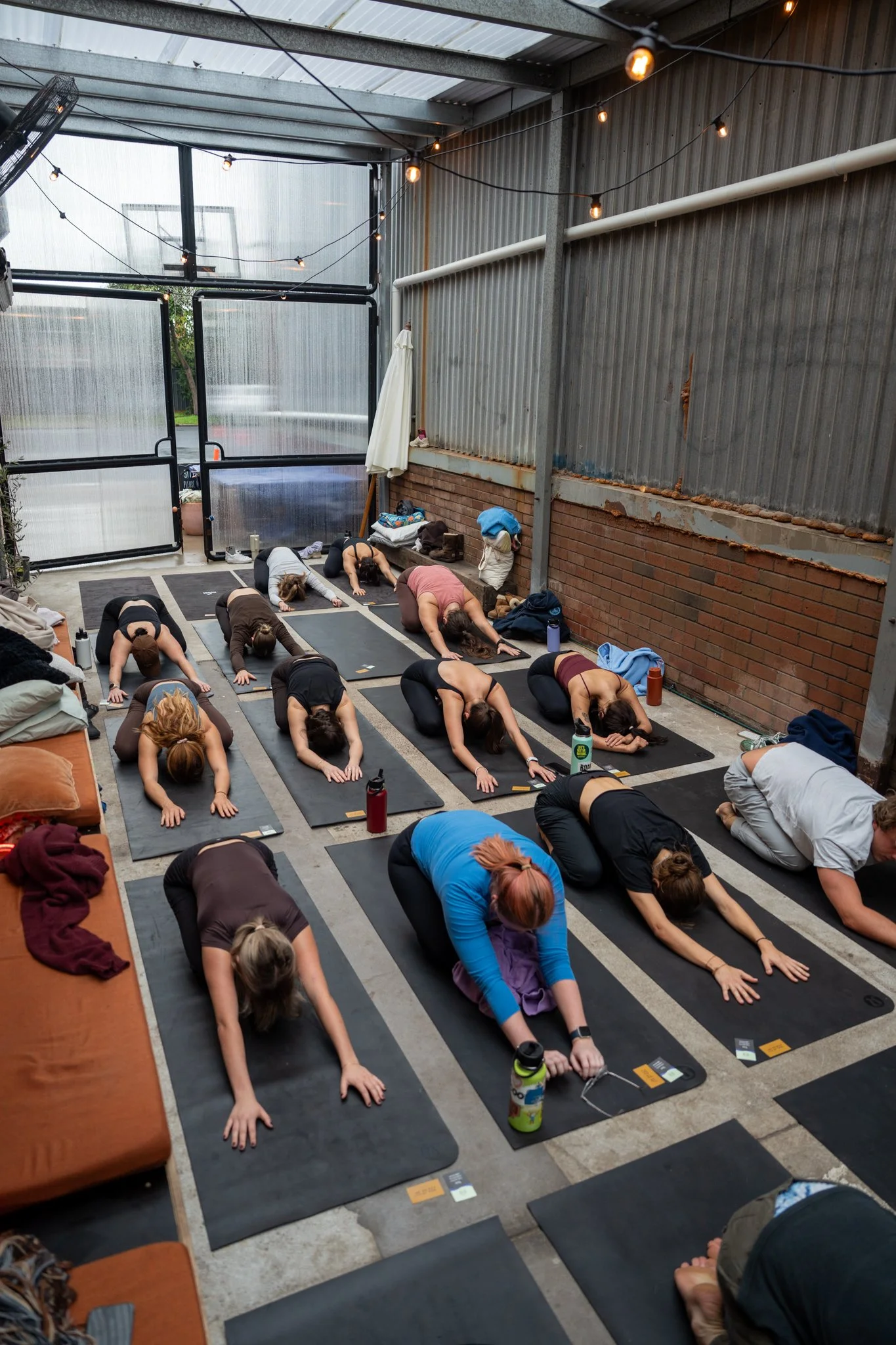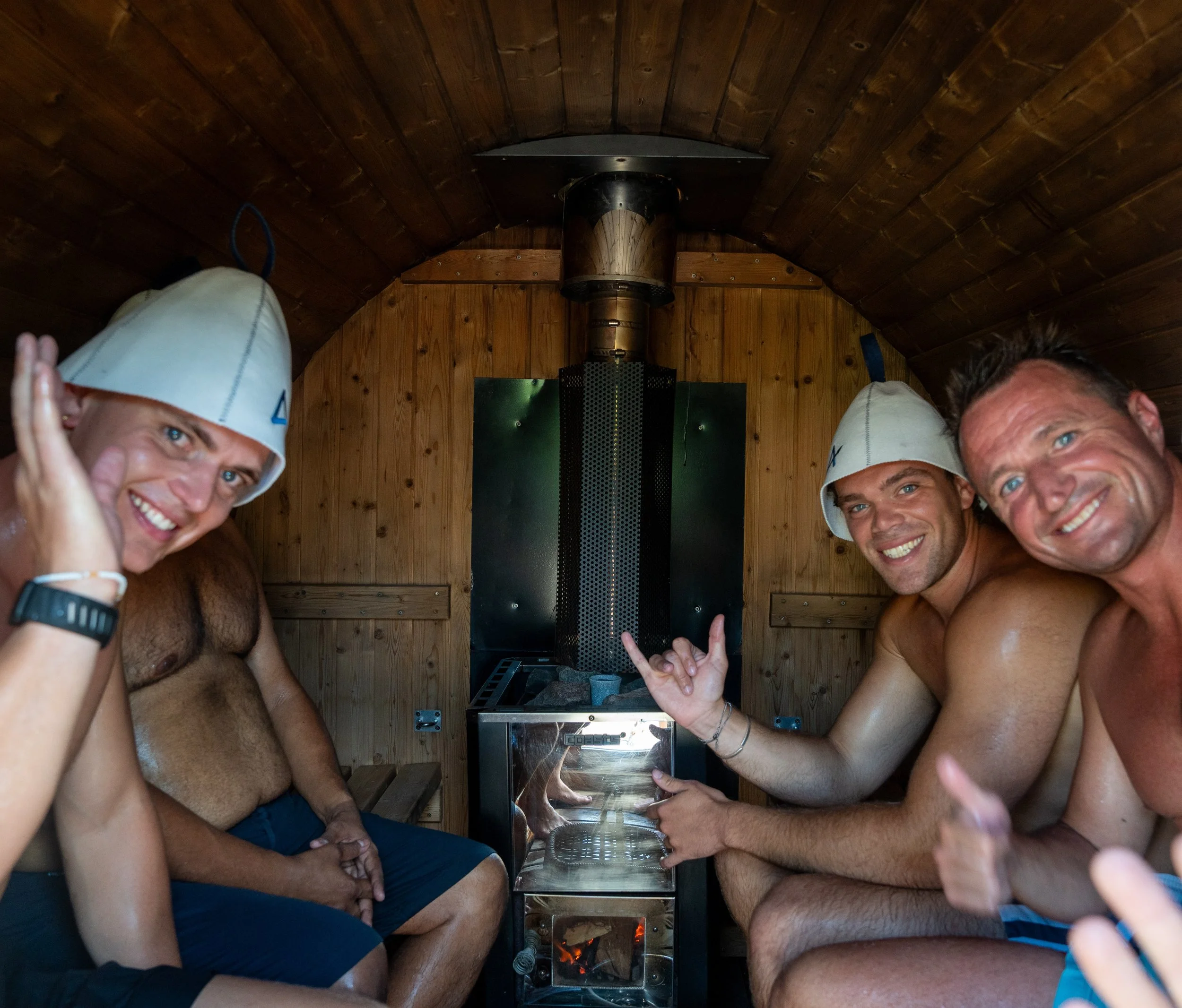
The Power of Breathwork & Wellness
What is Breathwork?
Breathwork, in its simplest form, is conscious breathing.
Just simply acknowledging your breath as it flows in and out of your body.
Yet, there’s more to Breathwork than meets the eye.
Modern Breathwork techniques are deeply rooted in ancient traditions, from the yogis and monks of India to indigenous shamanic rituals across the globe.
Today, Breathwork is backed by science as a powerful tool for stress relief, mental clarity, and physical well-being.
Fact: A recent study conducted by Macquarie University in 2024 on conscious connected breathing displayed that just one session can improve mood and decrease anxiety by up to 36%.
Controlled breathing techniques activate the parasympathetic nervous system reducing the stress hormone cortisol.
Why Breathwork?
We take over 20,000 breaths a day, but how many of them are you consciously aware of?
Your breath influences your nervous system, energy levels, emotional state, and even immune function.
When practiced intentionally, Breathwork can:
Lower stress & anxiety by activating the parasympathetic nervous system
Boost energy & focus through oxygen optimisation
Enhance recovery by reducing inflammation and improving circulation
Strengthen the immune system by balancing oxygen and carbon dioxide levels in the body
Fact: Deep diaphragmatic breathing increases oxygen delivery to the brain by nearly 20%, improving cognitive function and reducing fatigue.
The Hidden Issue:
Chronic Over-Breathing
Breathing is automatic, but that doesn’t mean we’re doing it right.
In today’s fast-paced world, many of us are chronic over-breathers, taking more breaths than our body actually needs. This subtle yet powerful dysfunction keeps us in a constant state of stress, contributing to fatigue, anxiety, and poor performance, illness and anxiety.
How Over Breathing Triggers Stress
Every breath you take activates your nervous system. When we breathe too fast or too shallowly, especially through the mouth, we activate the sympathetic nervous system, also known as the fight or flight response. This tells the body that we are under threat, even when we are sitting at our desk or lying in bed.
The result?
Increased heart rate & blood pressure – Your body heightens and prepares for danger, even if none exists.
Higher cortisol (stress hormone) levels – Leading to chronic stress, poor sleep, and emotional instability.
Reduced oxygen efficiency – Ironically, over-breathing can lower oxygen delivery to the brain and muscles by causing an imbalance in carbon dioxide levels.
The Solution:
Breathe Less…
The good news.
You can reverse the issues of over breathing by retraining your breath. Proper breath control, breathing slower, breathing through the nose, and breathing deep into our diaphragm activate the parasympathetic nervous system.
This nervous system shift:
Lowers cortisol levels
Improves mental clarity and focus
Enhances recovery and performance
Improves overall well-being
The key isn’t just breathing less, it’s breathing more efficiently.
How Do I Breathe More Efficiently?
Firstly, we start by breathing through the nose.
The mouth is for eating, the nose is for breathing.
Secondly, we take conscious awareness of our breath. Breathing low, slow and deep.
From here, we can retrain our breath for peak performance and efficiency.
Peak performance isn't just about physical training, it starts with optimal breathing. Many high performers, from elite athletes to corporate executives, harness the power of Breathwork to maximise focus, endurance, and resilience.
The key:
Effective breathing isn’t all about oxygen, it’s actually about how efficiently your body regulates CO₂ levels.
Breakthrough Breathwork
Breakthrough Breathwork is a powerful, active Breathwork technique that uses conscious, breathing to unlock your innate healing potential and guide you towards profound personal transformation.
It's more than just breathing; it's an immersive journey into your inner landscape. Through specific patterns of sustained, rhythmic breathing, you create a safe and powerful energetic state within your body. This gently activates your nervous system, allowing you to access non-ordinary states of consciousness. In this unique space, you can bypass the analytical mind and connect directly with your subconscious, where unresolved emotions, suppressed memories, and deep-seated patterns often reside.
What to Expect & How it Works:
During a Breakthrough Breathwork session, you lie down comfortably and are guided through a continuous breathing rhythm. Many participants describe a range of physical sensations, emotional releases, and vivid inner experiences. This process can lead to:
Emotional Release: A safe space to process and release long-held stress, grief, anger, and other suppressed emotions, leading to a profound sense of lightness.
Mental Clarity: Quieting the busy mind to gain new perspectives, insights, and solutions to challenges.
Stress Reduction: A deep rebalancing of the nervous system, shifting from fight-or-flight to rest-and-digest, fostering deep relaxation and peace.
Increased Self-Awareness: Connecting with your authentic self and intuition, fostering a stronger sense of purpose and direction.
Physical Healing: Releasing tension held in the body and supporting the body's natural healing processes.
Spiritual Connection: Experiencing states of heightened awareness, interconnectedness, and spiritual insight.
Breakthrough Breathwork is a catalyst for change. It's a journey of self-discovery that can illuminate your path, release what no longer serves you, and forge a new, more authentic, and empowered you. While often intense, it's always conducted in a supportive and guided environment, allowing you to safely explore your inner world and integrate your experiences for lasting positive change.
Ready to explore your breath as a tool for transformation?
Breathwork For Peak Performance
Why is CO₂ Tolerance Important?
Many people associate oxygen (O₂) with performance and endurance, but CO₂ levels actually regulate our breathing drive. The Bohr Effect explains that higher CO₂ levels improve oxygen delivery to muscles and tissues. High performers develop a higher tolerance to CO₂, meaning they can maintain relaxed, controlled breathing even when CO₂ levels rise.
Characteristics of Highly Efficient Breathers
Low Sensitivity to CO₂ – They don’t panic or feel air hunger as quickly as inefficient breathers.
More Efficient Oxygen Utilisation – Higher CO₂ levels help offload O₂ from hemoglobin to the muscles and brain.
Lower Respiratory Rate – They breathe slower and deeper, conserving energy and preventing unnecessary over breathing.
Better Endurance & Recovery – Athletes and freedivers train CO₂ tolerance to extend breath hold times and improve cardiovascular efficiency.
How to Train CO₂ Tolerance
Nasal Breathing – Encourages slower, more controlled breathing and builds CO₂ tolerance naturally.
Breath-Hold Training – Deliberate breath-holds increase CO₂ levels and train the body to tolerate higher concentrations.
Controlled Hypercapnia – Gradually exposing the body to elevated CO₂ through Breathwork practices like CO₂ tables (used by freedivers) enhances breath control.
Efficient breathers aren’t just inhaling more oxygen, they’re masters at tolerating and using CO₂ effectively.
Cold Exposure & Ice Baths
Ice baths are more than just a trend. They are a scientifically backed method to enhance recovery, reduce stress and promote resilience.
Cold exposure triggers a powerful physiological response, including:
Increased dopamine levels by up to 250%, improving mood and motivation
Improved circulation & reduced inflammation, aiding muscle recovery
Improved stress resilience by strengthening the nervous system’s response to discomfort
Pairing ice baths with Breathwork creates a state of deep presence and mental clarity, allowing you to harness the full potential of your body and mind.
Fact: Cold exposure improves your metabolic rate and increases brown fat activation, helping to burn more calories.
The Power Of Sauna & Breathwork
Sauna Benefits
Sauna’s enhance recovery, longevity, and mental wellbeing.
When combined with Breathwork, saunas help to improve oxygen efficiency, stress resilience, and performance.
The benefits include:
Improves circulation, increasing heart rate mimicking exercise.
Improved cardiovascular health
Reduces risk of heart disease & stroke (JAMA Internal Medicine, 2015).
Supports lymphatic drainage and detoxification
Sauna lowers cortisol levels, promoting relaxation.
Releases endorphins, improving mood.
Activates the parasympathetic nervous system increasing HRV post sauna.
Heat acclimation boosts VO₂ max & recovery.
Increased production of growth hormone for muscle repair.
Improves oxygen efficiency.
Stimulates heat shock proteins (HSPs).
Enhances white blood cell production.
Reduces risk of colds & infections.
Breathwork & Contrast therapy: The Ultimate Combo
Pairing sauna with Breathwork and ice baths helps to elevate your physical and mental wellbeing. Whether you're an athlete or wellness enthusiast, this combo boosts physical performance, mental resilience, and longevity.
Join us for an immersive Breathwork, sauna, ice bath experience!
Nature & Breathwork
Spending time in nature enhances the effects of Breathwork, bringing us back to a more primal and grounded state.
Oxygen-Rich Environments – Practicing Breathwork in nature improves lung function and increases oxygen absorption and efficiency.
Cold Water Immersion in Nature – Combining ice baths with rivers, oceans, and lakes amplifies the body’s ability to adapt to stress.
Altitude Training & Breath Control – Practicing breath holding techniques in natural environments improves CO₂ tolerance, optimising endurance and mental clarity.
Sunlight & Circadian Rhythm Regulation – Breathwork outdoors synchronises the body’s natural clock, improving sleep and hormonal balance.
Fact: Studies show that just 20 minutes in nature can lower cortisol levels, reduce heart rate, and improve overall well-being.
Are you ready to unlock your full potential?
Join us at one of our transformational experiences and take control of your breath, body and mind.





